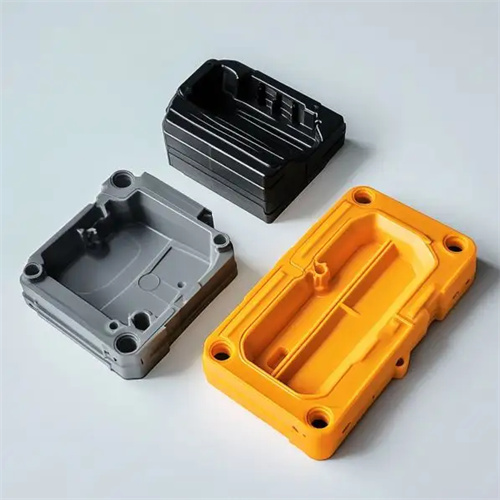The injection molding slider locating beads are key components that ensure the precise positioning of the mold slider after mold opening. The rationality of their design directly affects the operational stability of the mold and the molding accuracy of the plastic part. In injection molds, sliders are often used to mold side holes, side recesses, and other structures of plastic parts. When the mold is opened, the slider needs to move laterally to disengage from the plastic part, and needs to be accurately reset when the mold is closed. The locating beads cooperate with the locating grooves on the slider to fix the slider in a preset position after the mold is opened, preventing it from shifting due to gravity or vibration, and avoiding collisions with other mold parts when the mold is closed. For example, in a mold for a plastic part of an automobile door panel, if the slider locating beads fail, the slider may shake after the mold is opened, causing it to collide with the core when the mold is closed, which can damage the mold at best and cause production interruptions at worst.

The structural design of an injection-molded slider’s positioning bead requires comprehensive consideration of positioning accuracy, load-bearing capacity, and service life. The positioning bead typically consists of a steel ball, spring, housing, and adjustment screw. The diameter of the steel ball is determined by the slider’s weight and positioning requirements, generally ranging from 3-8mm. A larger diameter increases the load-bearing capacity, but may slightly reduce positioning accuracy. The spring force must be moderate. Too little force will prevent the steel ball from being firmly pressed into the positioning groove, resulting in loose positioning. Too much force will increase the resistance to slider movement and accelerate wear of the steel ball and positioning groove. For example, for a 5kg slider, a 5mm diameter steel ball and a spring force of 8-10N can be used. This ensures reliable positioning without excessively increasing the slider’s movement resistance. The housing is typically made of 45-gauge steel, surface-hardened to a hardness of HRC 40-45 for improved wear resistance.

The installation position of the locating bead on the slider is just as important as the design of the locating groove. The installation position should be close to the center of gravity or force point of the slider so that the locating bead can evenly bear the gravity and inertia of the slider and prevent the slider from tilting. The shape of the locating groove is usually hemispherical or conical, with a depth of 1/3-1/2 of the diameter of the steel ball. The bottom of the groove must be smooth and rounded to prevent the steel ball from being subjected to excessive impact when entering and exiting the groove. For example, the depth of the slider locating groove of a certain mold is too shallow (only 1/4 of the diameter of the steel ball), resulting in the steel ball not being fully embedded in the groove after the mold is opened. After the slider is moved multiple times, the edge of the locating groove wears, the positioning accuracy decreases, and the locating groove eventually has to be reprocessed. In addition, the position of the locating groove must be accurate, and the coaxiality deviation with the locating bead should be controlled within 0.1mm to ensure that the slider can be smoothly reset when the mold is closed.

The material selection and heat treatment process of positioning beads significantly impact their performance. Steel balls must be made of high-strength, wear-resistant materials, such as GCr15 bearing steel. After quenching and tempering, they achieve a hardness of HRC60-65, offering excellent wear and impact resistance. Springs must be made of 65Mn spring steel, subjected to low-temperature tempering to ensure elasticity and fatigue strength, with a service life of at least 100,000 cycles. For example, a mold using ordinary carbon steel for the steel balls experienced severe wear after less than 20,000 uses, leading to positioning failure. However, replacing them with GCr15 steel balls extended their service life to over 150,000 cycles. The housing and adjusting screw must fit tightly, with a clearance of no more than 0.02mm, to prevent the plastic melt from entering the positioning beads during the injection molding process and affecting their proper function.

In practical applications, the positioning beads must be optimized according to the slider’s movement and operating environment. For large sliders or sliders that move vertically, multiple positioning beads can be used in combination to improve positioning stability. For example, a slider weighing more than 10 kg can have a positioning bead installed at each end to ensure more uniform force distribution. For molds operating in high-temperature environments (such as molds molding PA66+GF materials), the positioning bead springs must be made of high-temperature resistant spring steel to avoid a decrease in spring force due to excessive temperatures. In addition, a grease filling hole can be provided on the positioning bead housing to regularly add high-temperature grease to reduce friction and wear between the steel ball and the positioning groove. Through continuous design optimization and enhanced maintenance, the positioning beads of injection molded sliders can effectively ensure the positioning accuracy of the slider and improve the reliability and service life of the mold.
